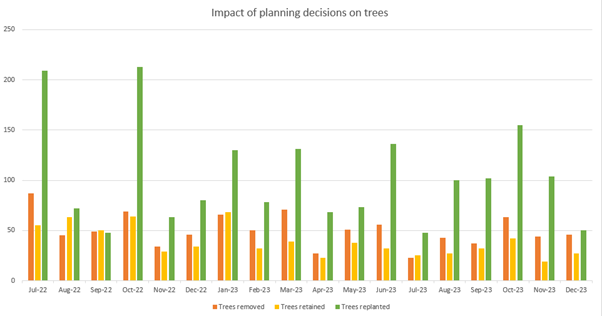Published: Thursday 05 Sep 2024
In Whitehorse, planning controls protect most trees on private land. This means that a permit is required to remove a protected tree.
In deciding whether a permit should be granted or not, planners consider the health of the tree, its contribution to the landscape and its life expectancy.
If a permit is granted for the removal of a single tree, it is almost always a condition of the permit that another canopy tree be planted in its place. If multiple trees are granted permission for removal, a landscape plan featuring new canopy trees is required with the locations of the new trees reflective of the design of the built form. Trees in the front of new buildings are preferred as they soften the appearance of new dwellings from the street.
The impacts of these individual planning decisions cumulatively impact the condition of our urban forest. Collecting data about these decisions is a good first step in understanding the impact of the planning process on canopy trees.
Analysing this data shows that replacement planting features more native and indigenous species than exotic species. We also found that some species that were particularly popular in the past, such as Liquidambars, are reaching the end of their useful life and that narrow trees such as Callery Pears are very popular for unit developments.
Overall, we found that significant number of trees are retained through planning permits and that replacement trees consistently outnumber trees approved for removal. This renewal of our urban forest is vital for supporting our community’s cooling and greening goals.
Our next challenge is to ensure that the replacement trees are given the opportunity to establish to provide the benefits that we deserve.








